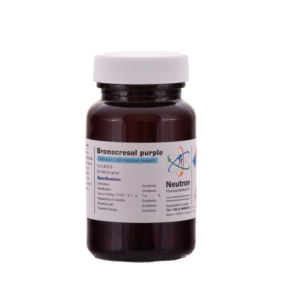متیل بلو ( آنیلین بلو)
| Formula | C37H27N3Na2O9S3 |
| Chemical formula | C37H27N3Na2O9S3 |
| molar mass | 799.8 g/mol |
| CAS number | 28983-56-4 |
| HS Code | 32041900 |
| EC number | 249-352-9 |
| Storage | Store at 5 to 30° c |
| SDS | available |
| RTECS | DB5044700 |
| Odour | odourless |
| Form | solid |
| Color | brown purple |
| p H value | ~5.0 (10 g/l 20 °c ) |
| solubility in water | ~70 g/l (20 °c ) |
| solubility in ethanol | ~4 g/l ( 20 °c ) |
| Apperance | Conforms | ||
| Description | Conforms | ||
| Solubility | Conforms | ||
| Identification | Conforms | ||
| E1 @ max 594 -610 | ≥ | 650 | |
| Wavelength | 594 – 610 | nm | |
| Ratio | 0.96 -1.09 |
Methyl blue is a synthetic dye with the chemical formula C₃₇H₂₇N₃Na₂O₉S₃, widely used as a stain in histology and microbiology. It specifically stains collagen blue in tissue sections and is commonly used in differential staining techniques such as Mallory’s trichrome stain and Gömöri trichrome stain. In addition to its staining applications, methyl blue can mediate electron transfer in microbial fuel cells, and is effective for staining fungal cell walls.
It is also available in mixtures, including:
• With water blue, under names like Aniline Blue WS, Aniline Blue, China Blue, or Soluble Blue
• In Lactophenol Cotton Blue (LPCB), a solution containing phenol, glycerol, and lactic acid, used for microscopic visualization of fungi
🧪 Applications
Methyl blue has been used:
• To stain leaf disks for callose visualization within plant cells
• For DAPI/septa co-staining in cellular imaging
• As a marker for β-(1→3)-D-glucans or acidic phloroglucinol, for the detection of callose and lignin
Biochemical and Physiological Actions
Methyl blue is considered a xenobiotic compound and exhibits antiseptic properties. It is valuable in polychrome staining and is commonly used in biological sample preparation. Moreover, it serves as a model compound to study the role of catalysts in light-induced degradation of dyes.



